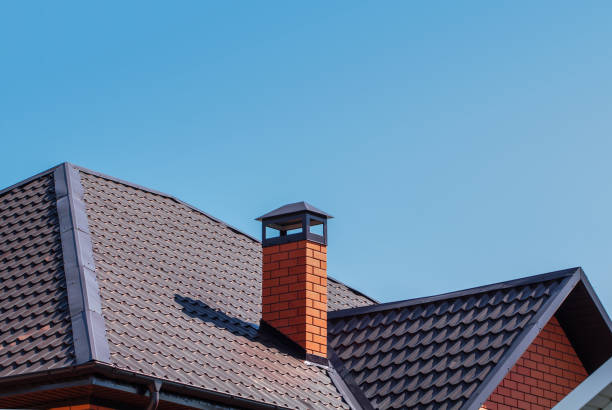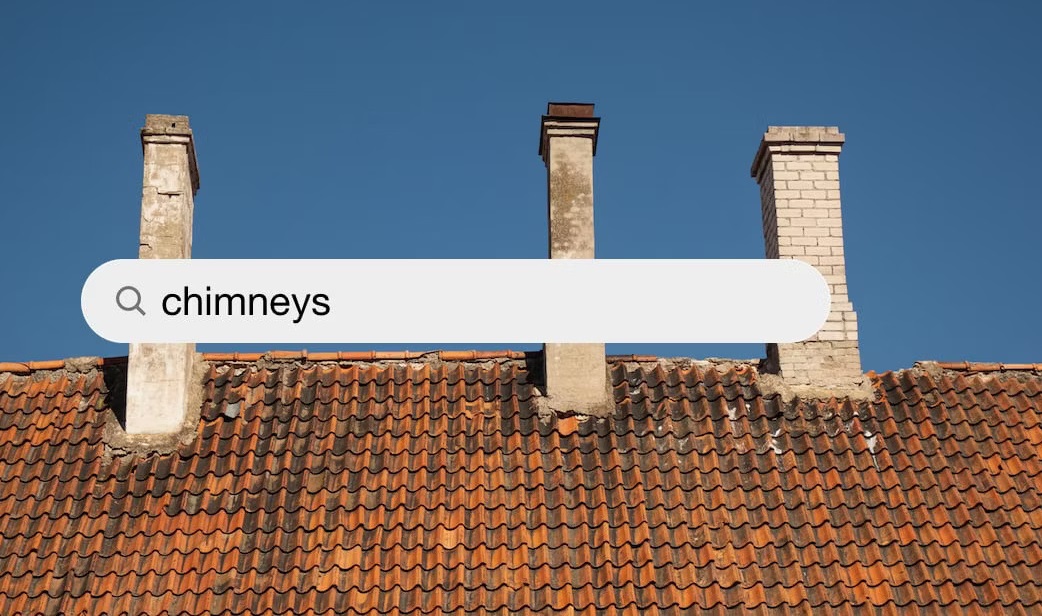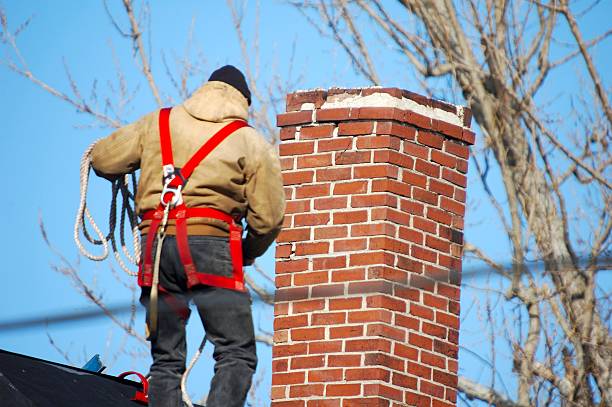Introduction
A chimney crown is a critical component of your chimney system. It sits on top of the chimney, protecting it from water damage & preventing structural issues. Over time, moreover, the chimney crown can deteriorate & develop problems. In this blog, we will cover seven signs that indicate the need for a chimney crown repair or replacement. By being aware of these signs, you can address any issues fastly & ensure the longevity and functionality of your chimney.
What is a Chimney Crown?
The chimney crown, also known as the chimney cap or chimney top, is the topmost part of the chimney structure. It is typically constructed using a combination of concrete, mortar, or metal. The primary purpose of a chimney crown is to protect the chimney’s masonry & flue from water damage.
Importance of a Chimney Crown
A properly functioning chimney crown is important for maintaining the integrity of your chimney system. The chimney crown acts as a barrier, preventing rainwater, snow, & other forms of moisture from seeping into the chimney. Water intrusion can cause extensive damage to the chimney structure, leading to costly repairs.
A well-designed chimney crown helps keep leaves, twigs, & other debris from entering the chimney. It prevents blockages and ensures optimal airflow for efficient combustion & proper ventilation. By preventing water damage, the chimney crown helps maintain the stability & longevity of the chimney. Without a functioning crown, the masonry can deteriorate, leading to structural issues.
Signs of Chimney Crown Damage
It is essential to be aware of the following signs that indicate potential chimney crown damage:
· Cracks in the Crown
Inspect the chimney crown for visible cracks. Over time, exposure to weather elements can cause the crown to crack. Even small cracks can allow water to penetrate and cause further deterioration.
· Water Leaks
If you notice water leaks inside your home near the chimney, it could be a sign of a damaged chimney crown. Water may enter through cracks or gaps in the crown, leading to moisture issues in the attic, walls, or ceilings.
· Shifting or Sagging
A well-constructed chimney crown should be level and securely attached to the chimney. If you observe any signs of shifting or sagging, it indicates structural problems. This can be caused by inadequate construction or the effects of freeze-thaw cycles.
· Spalling or Chipping
Spalling refers to the flaking or peeling of the chimney crown’s surface. If you notice pieces of concrete or mortar falling off, it suggests significant deterioration. Spalling is often caused by moisture penetration and can worsen if left unaddressed.
· Vegetation Growth
The presence of moss, algae, or vegetation on the chimney crown is a clear indication of moisture accumulation. Vegetation growth can accelerate the deterioration of the crown and surrounding masonry.
· Damaged Mortar Joints
Inspect the area where the chimney crown meets the chimney structure. If you observe deteriorating or missing mortar joints, it can indicate water damage or long-term wear. Damaged mortar joints compromise the structural integrity of the chimney.
· Rust Stains on the Chimney
Metal chimney crowns may develop rust stains due to prolonged exposure to moisture. Rust stains not only affect the crown’s appearance but also indicate corrosion and potential structural weakness.
Consequences of Ignoring Chimney Crown Issues
Neglecting chimney crown problems can lead to severe consequences:
Water Damage
Water penetration through a damaged crown can result in structural damage to the chimney, including weakened bricks, crumbling mortar, and compromised flashing. This can ultimately affect the entire chimney system.
Increased repair costs
Ignoring chimney crown issues can lead to more extensive damage over time. Delaying repairs or replacement may require costly remediation, such as chimney rebuilding or extensive masonry restoration.
Fire hazards
A damaged chimney crown can allow water to enter the chimney flue. When water combines with soot and creosote deposits, it can lead to the formation of a highly flammable substance called “glazed creosote.” This increases the risk of chimney fires.
Chimney Crown Repair or Replacement Options
When faced with chimney crown problems, you have two main options: repairing the damaged crown or replacing it entirely. The choice depends on the extent of the damage and the advice of a professional chimney technician.
Repairing a Damaged Chimney Crown
Minor cracks or small areas of damage can often be repaired. A chimney professional will assess the extent of the damage and apply appropriate repair methods. This typically involves patching the cracks with specialized sealants or performing minor masonry repairs.
Replacing a Chimney Crown
If the damage to the chimney crown is extensive or if the crown is beyond repair, replacement becomes necessary. In such cases, the existing crown is removed, and a new one is installed using durable materials that are resistant to weathering and water intrusion.
Importance of Professional Chimney Services
When dealing with chimney crown issues or any chimney-related problems, it is essential to hire a professional chimney services provider. Here’s why:
· Expertise
Certified chimney professionals have the knowledge and experience to accurately assess chimney crown damage and recommend the most suitable repair or replacement solution.
· Safety
Chimney work can be hazardous, especially when climbing rooftops or working at heights. Professionals have the necessary training and equipment to ensure their safety and the safety of your property.
· Long-term savings
Professional chimney services help address issues promptly, preventing further damage and costly repairs down the line. By investing in professional maintenance, you can extend the lifespan of your chimney and avoid unnecessary expenses.
Conclusion
A well-maintained chimney crown is essential for the proper functioning and longevity of your chimney. By being aware of the signs of chimney crown damage, you can take timely action to address any issues. Whether it’s repairing minor cracks or opting for a complete replacement, consulting with a professional chimney services provider is crucial for the safety and efficiency of your chimney system.
FAQs
Q1. What is a chimney crown?
A chimney crown is the topmost part of the chimney that assists it from water damage & debris. It acts as a barrier to prevent moisture from entering the chimney structure.
Q2. How can I identify if my chimney crown needs repair or replacement?
Signs of chimney crown damage include cracks, water leaks, shifting or sagging, spalling or chipping, vegetation growth, damaged mortar joints, & rust stains on the chimney. If you notice any of these signs, it’s advisable to seek professional inspection & advice.
Q3. Why is it important to address chimney crown issues?
Ignoring chimney crown issues can lead to water damage, structural deterioration, increased repair costs, & fire hazards. Timely repair or replacement of a damaged chimney crown ensures the safety & longevity of your chimney.
Q4. Can I repair the chimney crown myself?
It is recommended to hire a professional chimney services provider for chimney crown repairs. They have the expertise, knowledge, & proper tools to assess the damage accurately and perform the essential repairs or replacements.
Q5. How long does a chimney crown repair or replacement take?
The duration of chimney crown repair or replacement depends on the level of the damage & the specific requirements of the job. Broadly, minor repairs can be completed in a few hours, while a complete replacement may take a day or more.
Q6. Are there any preventive measures to avoid chimney crown issues?
Regular chimney maintenance, including annual inspections and cleanings, can help identify & address potential chimney crown issues before they intensify. Moreover, keeping the chimney protected with a chimney cap & ensuring proper water drainage can minimize the risk of crown damage.
Q7. How much does the chimney crown repair or replacement cost?
The cost of chimney crown repair or replacement varies depending on factors such as the level of the damage, the materials needed, & the labor involved. It is best to consult with a professional chimney services provider to obtain an accurate cost estimate based on your particular situation.




